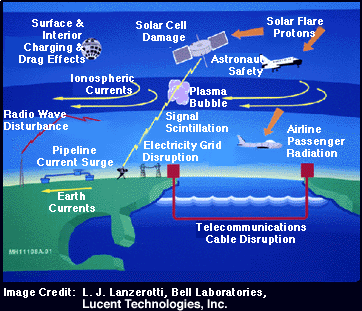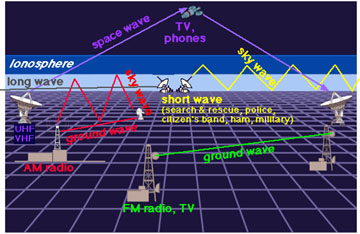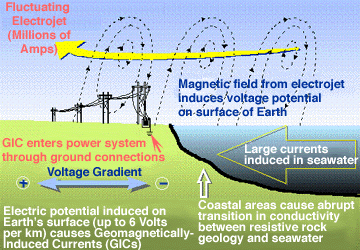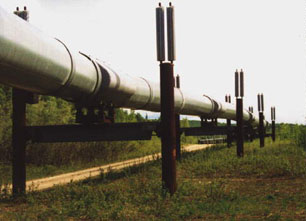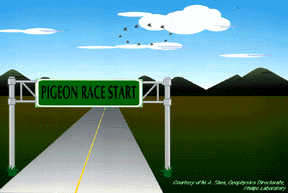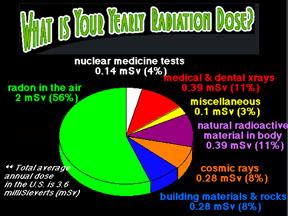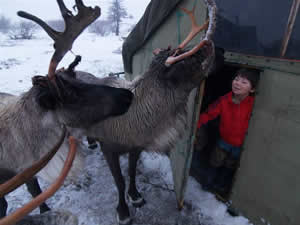Click on image for full size
Image courtesy L. J. Lanzerotti, Bell Laboratories, Lucent Technologies, Inc.
Related links:
Explore Space Weather and the Sun-Earth System
Space Weather at Earth and in Near-Earth Space (Geospace)
Hands-on Activity: Build a Magnetometer
Movie: Supercomputer Models Help Scientists Understand Sunspots
When Nature Strikes: Space Weather
When Nature Strikes: You Be the Solar Scientist! Classroom Activity
How Space Weather Affects Human Society
It may seem strange to you, but space weather can affect people on Earth. Let's see how!
Space weather "storms" can mess up radio waves. We use radios waves to communicate with airplanes, to send cell phone signals, and to broadcast television shows. Some radio waves bounce off a layer of our atmosphere called the ionosphere. The ionosphere changes along with the "weather in space". Space weather storms change the magnetic field around Earth. That can really mess up compasses! Changes to the magnetic field make electricity flow in strange places. That can damage electrical power systems and metal pipelines.
Space weather creates different types of radiation. Radiation can harm people and other living creatures. Some animals, like homing pigeons, have natural compasses. Space weather storms can make it harder for those animals to find their way around.
Radiation from space weather can damage satellites. It can "fry" electronics and can "wear away" at solar panels. "Strong" space weather heats Earth's atmosphere and makes it puff up. That makes more drag on satellites, which tend to fall out of orbit sooner.
Not all space weather effects are bad, though. "Storms from space" can produce beautiful light shows called the aurora, or Northern and Southern Lights. There are myths, legends and art in Arctic cultures about the aurora. For example, one Norse myth says the Northern Lights are reflections from the shields of the warrior-maiden valkyries.


